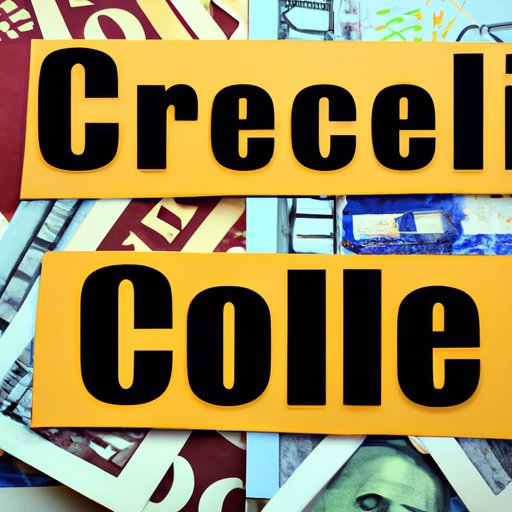
Introduction
College education in the United States is expensive, and many students struggle to pay for tuition, fees, and books. The idea of free college has gained popularity in recent years, with many politicians and educators supporting the concept. However, the question remains: can we afford to make college free for everyone? This article examines the hidden costs, unintended consequences, and trade-offs of providing free college education and argues that it is not a sustainable solution.
The Hidden Costs of Free College: Why We Can’t Afford It
One reason why free college is not truly free is that it comes with hidden costs. These costs can take many forms, such as increased taxes or reduced quality of education. For example, if we make college free, we would have to increase taxes to pay for it. This would burden taxpayers, and many people would be unhappy about having to pay more. Additionally, if colleges receive less money from tuition, they may have to cut programs or reduce the quality of education that they provide.
Furthermore, we can look at countries that have tried free college and faced financial difficulties. In some countries, the cost of higher education is so high that it is unsustainable. For example, in Chile, free college education led to decreased quality of education and increased inequality. The government could not provide adequate funding to support the program, and students from low-income families continued to have limited access to higher education.
The Unintended Consequences of Free College: A Closer Look
In addition to hidden costs, free college can also have unintended consequences. For instance, making college free may lead to increased enrollment rates, which could strain colleges and universities. More students could also mean reduced college readiness, as many students may not be fully prepared for college-level coursework. Additionally, widespread enrollment could lead to negative impacts on the workforce, as there may be a surplus of college graduates in certain fields.
There is also evidence of negative impacts on countries that have already implemented free college. For example, in Germany, free college education led to decreased quality of education and longer wait times for students. Many students ended up dropping out due to the crowded classrooms and lack of support.
Why Free College Won’t Solve the Real Problem in Higher Education
Furthermore, free college does not address the actual problems in higher education. For example, many students struggle with student loan debt and the lack of affordable housing and food options on college campuses. Additionally, there are concerns about the quality of education and the lack of support for students who come from disadvantaged backgrounds.
Free college may actually exacerbate these problems, as colleges would have to stretch their resources even further to accommodate more students. Instead, colleges should focus on improving the quality of education and providing more support for students. There are alternative solutions that address these issues, such as providing more financial aid, offering more affordable housing, and increasing support for first-generation and low-income students.
Paying It Forward: A Better Alternative to Free College
One alternative to free college is the “paying it forward” model. This model involves students paying a percentage of their income back to the government after they graduate, instead of paying tuition up front. This would allow students to attend college without incurring large amounts of debt, while also ensuring that the program is sustainable.
Several states, including Oregon and Tennessee, have already implemented the “paying it forward” model, and it has shown promising results. Students in these states have been able to attend college without the burden of student loan debt, and the program has been financially sustainable.
Why Free College Would Hurt Low-Income Students the Most
Free college may actually harm low-income students more than it helps them. This is because free college may divert resources away from financial aid programs, which provide crucial support for low-income students. Additionally, free college may not provide enough funding to cover living expenses, such as housing and food, which can be a significant burden for low-income students.
We can look at countries that have not provided adequate financial aid despite implementing free college. In Chile, for example, although college education was free, low-income students still had to pay for living expenses, transportation, and other costs. This made it difficult for many low-income students to attend college, which perpetuated inequality.
The Trade-offs of Free College: What We Would Give Up
Finally, we must consider the potential trade-offs of free college. If we make college free, we would have to make sacrifices in other areas. For example, we may have to cut funding for other important programs, such as healthcare or transportation. Additionally, we may see negative impacts on the economy, as increased taxes could discourage investment and hiring.
One example of a country that has faced consequences due to trade-offs made for free college is Denmark. Although college education in Denmark is free, the country has some of the highest taxes in the world. Additionally, the cost of living is also high, and many young people are struggling to find affordable housing and employment.
Why Making College Free Is Not a Sustainable Solution
In conclusion, while free college may sound like an attractive solution to the problem of college affordability, it is not a sustainable solution. It comes with hidden costs, unintended consequences, and trade-offs that we cannot afford to ignore. Instead, we should focus on alternative solutions that address the actual problems in higher education.
The “paying it forward” model is one promising alternative, and several states have already implemented this model with success. We should also prioritize providing more financial aid and support for low-income and first-generation students. By doing so, we can ensure that college is accessible and affordable for all students, without making unsustainable sacrifices.




